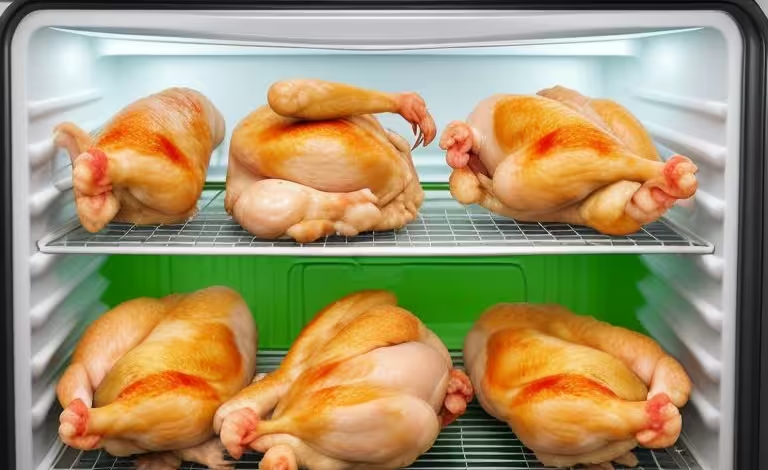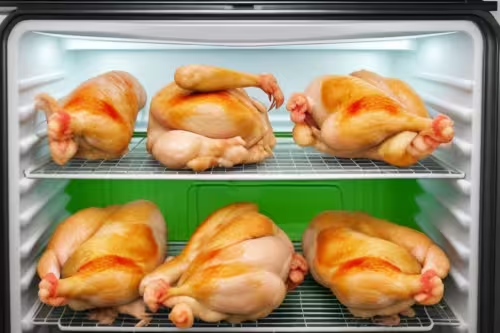How Long Can You Refrigerate Chicken? A Comprehensive Guide

How Long Can You Refrigerate Chicken? A Comprehensive Guide
When it comes to food safety, knowing how long you can refrigerate chicken is crucial. Chicken is a versatile and popular protein source, but it can also be a breeding ground for bacteria if not stored properly. In this article, we’ll explore the best practices for refrigerating chicken, how long it can stay fresh, and tips to ensure your chicken is safe to eat.
The Importance of Proper Chicken Storage
Chicken, like other raw meats, is highly perishable. Improper storage can lead to bacterial growth, which can cause foodborne illnesses. The two main culprits to watch out for are Salmonella and Campylobacter, both of which can cause severe illness. To avoid these risks, it’s essential to store chicken correctly and understand how long it can safely be kept in the refrigerator.
How Long Can You Refrigerate Chicken?
The shelf life of chicken in the refrigerator depends on whether it is raw or cooked. Here’s a breakdown of how long each type can be safely refrigerated:
1. Raw Chicken
- Whole Chicken: Raw, whole chicken can be safely refrigerated for 1 to 2 days.
- Chicken Parts (Breasts, Thighs, Wings, Drumsticks): Raw chicken parts also last 1 to 2 days in the refrigerator.
- Ground Chicken: Raw ground chicken has a slightly shorter shelf life and should be used within 1 day.
2. Cooked Chicken
- Cooked Chicken (Whole or Parts): Cooked chicken can be stored in the refrigerator for 3 to 4 days.
- Chicken Leftovers (Casseroles, Soups, Stews): Cooked chicken in dishes like casseroles or soups can also be kept for 3 to 4 days.
These timelines apply when chicken is stored in the refrigerator at or below 40°F (4°C), the temperature recommended by the USDA to prevent bacterial growth.
Tips for Safely Refrigerating Chicken
Proper storage of chicken involves more than just placing it in the fridge. Here are some key tips to ensure your chicken stays fresh and safe:
1. Store Chicken in Airtight Containers
To prevent contamination and odor transfer, store chicken in airtight containers or tightly sealed plastic bags. This will also help retain moisture and keep the chicken from drying out.
2. Keep Chicken on the Bottom Shelf
Always store chicken on the bottom shelf of your refrigerator. This prevents any juices from dripping onto other foods, which could cause cross-contamination.
3. Label and Date
Label and date your chicken packages when storing them. This helps you keep track of how long the chicken has been refrigerated and ensures you use it within the safe time frame.
4. Don’t Leave Chicken Out Too Long
Never leave chicken out at room temperature for more than 2 hours. If the ambient temperature is above 90°F (32°C), the time limit drops to 1 hour. Bacteria can grow rapidly in the “danger zone” between 40°F and 140°F (4°C to 60°C).
5. Marinate in the Refrigerator
If you’re marinating chicken, always do so in the refrigerator. Marinating at room temperature can encourage bacterial growth.
Signs Your Chicken Has Gone Bad
Even with proper storage, chicken can spoil if kept too long. Here are some signs that your chicken has gone bad and should be discarded:
1. Unpleasant Odor
Spoiled chicken often has a sour or ammonia-like smell. If your chicken has an off odor, it’s best to throw it away.
2. Slimy Texture
If the chicken feels slimy or sticky to the touch, it’s a sign of bacterial growth. Fresh chicken should be moist but not slimy.
3. Discoloration
Fresh chicken is typically pinkish in color. If it has turned gray, green, or has dark spots, it’s a sign that the chicken has spoiled.
4. Mold Growth
Visible mold is a clear sign that the chicken is no longer safe to eat. If you see any mold, discard the chicken immediately.
Can You Freeze Chicken for Longer Storage?
Yes, you can freeze chicken to extend its shelf life. Freezing is an excellent way to store chicken for longer periods while preserving its quality. Here’s how long you can freeze chicken:
1. Raw Chicken
- Whole Chicken: Can be frozen for up to 1 year.
- Chicken Parts (Breasts, Thighs, Wings, Drumsticks): Can be frozen for up to 9 months.
- Ground Chicken: Best used within 3 to 4 months.
2. Cooked Chicken
- Cooked Chicken (Whole or Parts): Can be frozen for up to 4 months.
- Chicken Leftovers (Casseroles, Soups, Stews): Can be frozen for 2 to 3 months.
Freezing Tips:
- Wrap Chicken Properly: Use heavy-duty aluminum foil, plastic wrap, or freezer bags to wrap the chicken tightly. You can also use vacuum-sealed bags to remove air and prevent freezer burn.
- Label and Date: Always label and date the chicken before freezing. This helps you keep track of how long it’s been stored.
- Thawing Chicken: Thaw chicken in the refrigerator, in cold water, or in the microwave. Never thaw chicken at room temperature, as this can lead to bacterial growth.
The Dangers of Consuming Spoiled Chicken

Eating spoiled chicken can lead to food poisoning, with symptoms that may include nausea, vomiting, diarrhea, abdominal cramps, fever, and dehydration. In severe cases, food poisoning from spoiled chicken can lead to more serious health complications, especially for vulnerable populations such as young children, the elderly, pregnant women, and those with weakened immune systems.
Common Bacteria Found in Spoiled Chicken
- Salmonella: One of the most common causes of foodborne illness, Salmonella can cause symptoms like diarrhea, fever, and abdominal cramps.
- Campylobacter: This bacteria is also commonly found in raw or undercooked chicken and can cause symptoms similar to Salmonella.
- Staphylococcus aureus: This bacteria can produce toxins that cause food poisoning symptoms, including nausea, vomiting, and stomach cramps.
What to Do If You Suspect Food Poisoning
If you suspect you’ve consumed spoiled chicken and are experiencing symptoms of food poisoning, it’s important to stay hydrated and seek medical attention if symptoms are severe or persist for more than 48 hours.
Preventing Cross-Contamination in the Kitchen
In addition to storing chicken properly, it’s important to prevent cross-contamination in the kitchen to avoid the spread of bacteria. Here are some tips:
1. Wash Your Hands
Always wash your hands with soap and water for at least 20 seconds before and after handling raw chicken.
2. Use Separate Cutting Boards
Use separate cutting boards for raw chicken and other foods, especially those that will be eaten raw, like fruits and vegetables.
3. Clean Kitchen Surfaces
Clean and sanitize all kitchen surfaces, utensils, and cutting boards that come into contact with raw chicken. Use hot, soapy water, and follow up with a disinfectant if necessary.
4. Cook Chicken Thoroughly
Cook chicken to an internal temperature of 165°F (74°C) to ensure that any harmful bacteria are killed. Use a meat thermometer to check the temperature.
5. Store Leftovers Safely
Store leftover chicken in airtight containers in the refrigerator within 2 hours of cooking. If you’re not planning to eat leftovers within 3 to 4 days, consider freezing them.
Conclusion: Safe Storage Equals Safe Consumption
Knowing how long you can refrigerate chicken is key to ensuring that it remains safe to eat. By following proper storage guidelines, being aware of the signs of spoilage, and taking steps to prevent cross-contamination, you can enjoy chicken without the worry of foodborne illness. Remember, when in doubt, it’s better to be safe and discard any chicken that you suspect may have gone bad.
